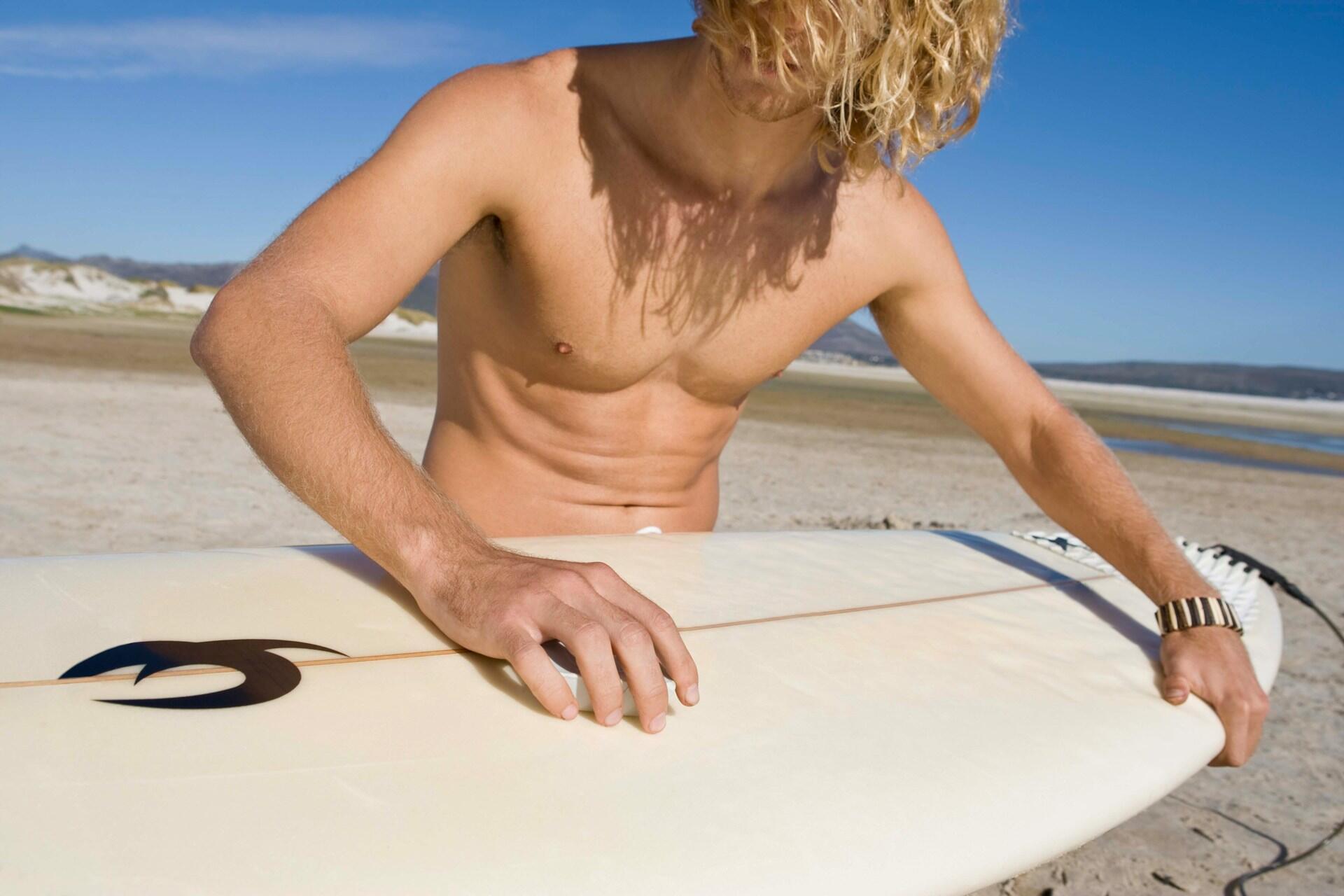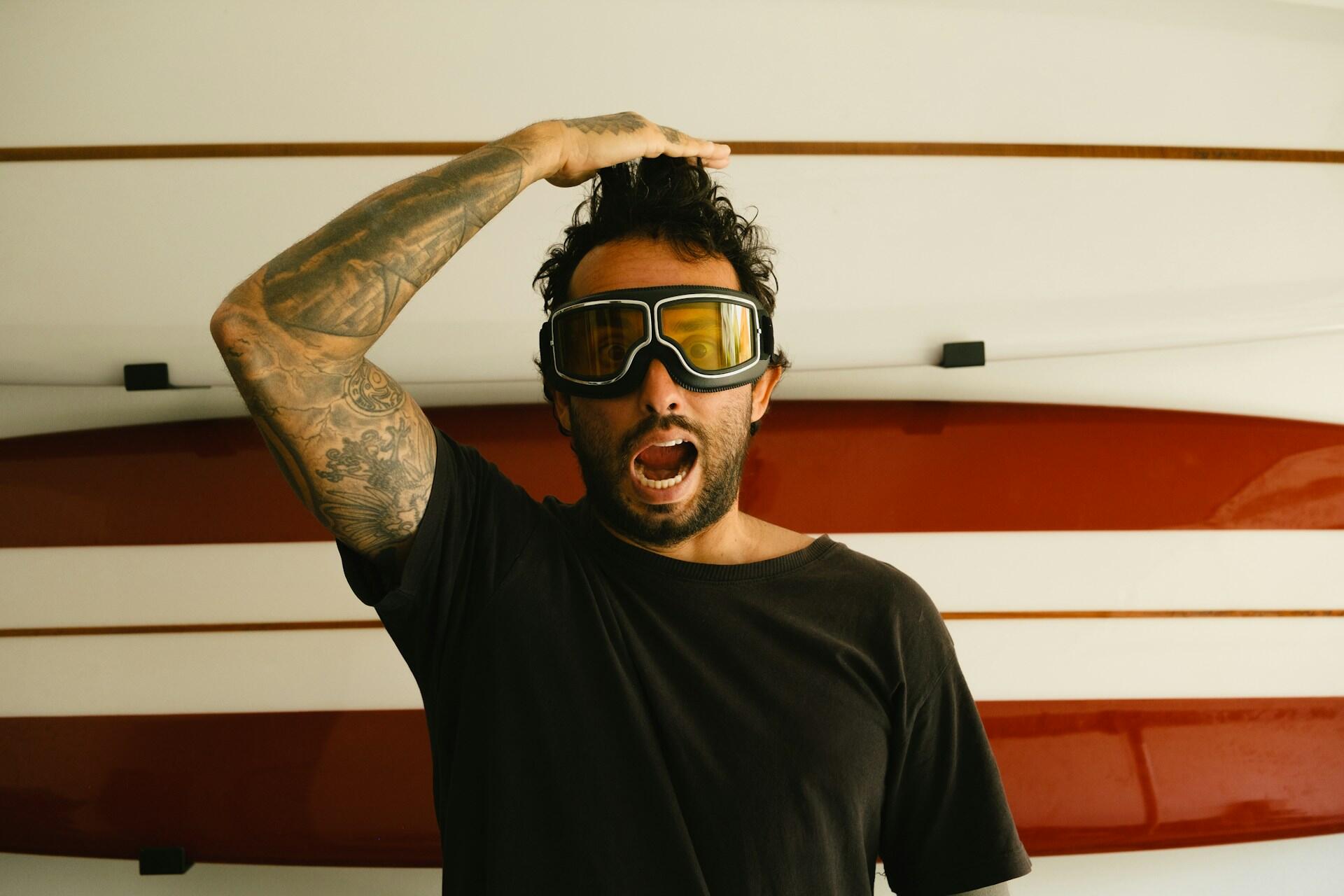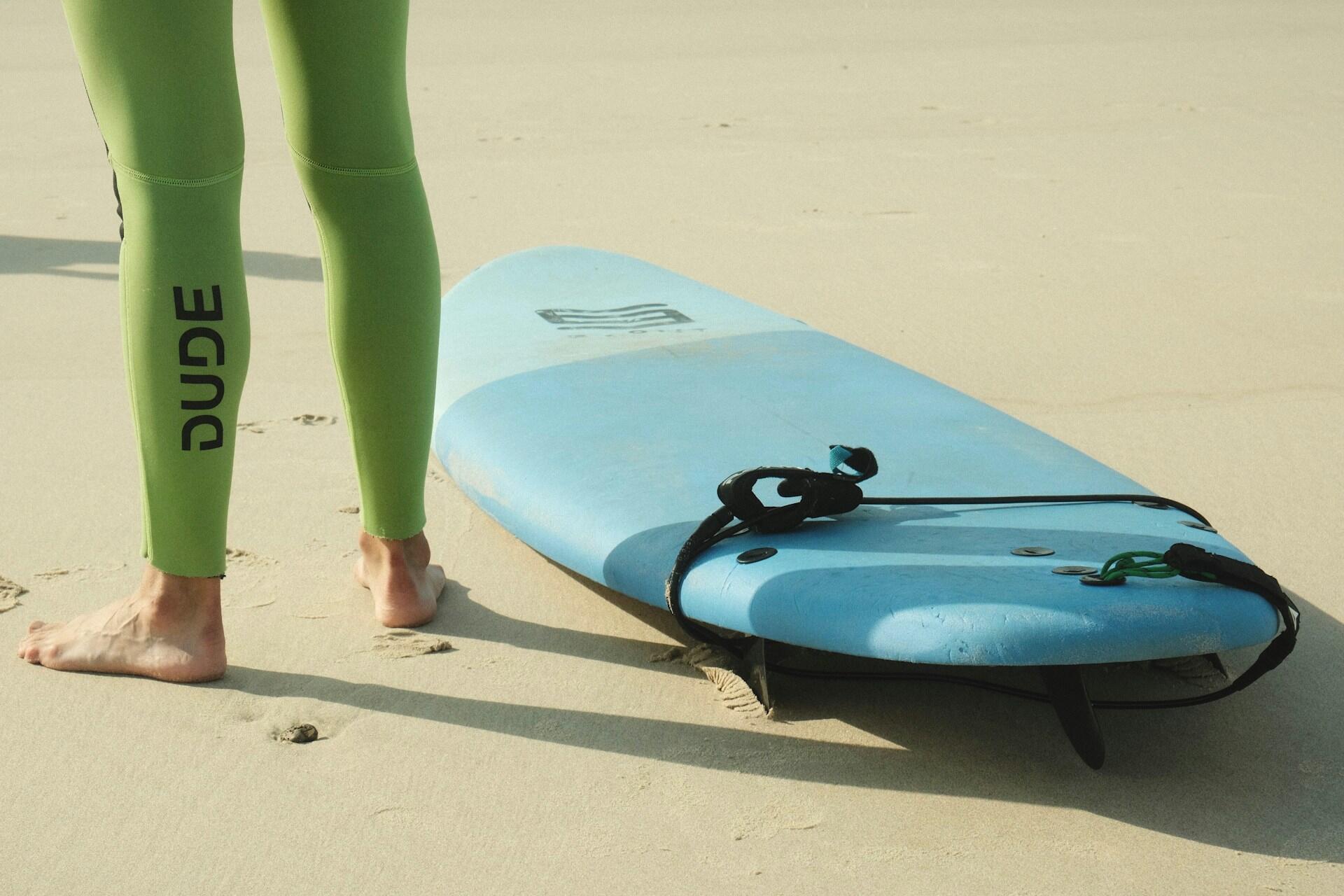If you walk into any sports store - or, better yet, one dedicated to surfing, you'll find a dizzying array of things to buy. Such includes waxes for your board and creams for your body, wetsuits and other coverings, and safety gear. You could easily walk out with more than a thousand dollars spent, but do you have to? This chart shows the type of gear surfers use and what you can do without (for now).
| ✅Necessary 🔶Optional | 🏄♀️Equipment | 🔎What it does | 🙋♂️Why you need it |
|---|---|---|---|
| 🔶 | Surfboard | Your primary platform to the waves! | You cannot surf without a board. Try renting a board for your first few sessions! |
| 🔶 | Fins | Provide stability and performance | Configure your board to the surf spot's conditions. |
| ✅ | Leash | Keeps your surfboad attached to you. | It's the law in some places! keeps your board from drifting away. |
| 🔶 | Wetsuit | Keeps your body temperature up in cool waters. Protects your skin from injury. | Prevent scrapes; resist hypothermia |
| ✅ | Rash guard | Prevents skin abrasions and deeper injury | Helps protect against sun exposure and irritation. |
| ✅ | Surf wax | Helps your feet grip the board. Prevents sliding while paddling. | You can also use a traction pad. |
| ✅ | Goggles | Keep saltwater out of your eyes. Protect against UV and glare. | To protect your eyes Available as prescription eyewear. |
| 🔶 | Surf poncho | Shields you as you change out of your wetsuit. | A large towel serves the same purpose. |
| 🔶 | Surf bag | Protects your board(s). Carries all your gear. | Keep your surfing equipment organised and protected. |
| ✅ | First aid kit | Provides resources in case of injury | Help may be a long time in coming. You might help another surfer. |

Surfboard
Unless you have some remarkable natural ability, you cannot surf without a surfboard.

The ideal board for beginner surfers is a soft-top board, which comes in various lengths and fin configurations. They're stable, float well, and are typically wider than other types of boards.
With that said, you don't have to rush out to buy a board ahead of your first surfing lesson.
Many surfing schools have boards for their students to learn on. That's a great opportunity for you to try different boards to see which one(s) work best for you.
What about if you're taking lessons with a private surfing coach? Many surfing hotspots have boards for hire, usually at a low hourly rate. You might also rent a board from a surf shop in town. If you do rent such a board, be sure to go over it with your coach to check for damage and potentially unsafe aspects.
In principle, yes, but not for an absolute beginner.
Borrow/rent a board until you know the type you want; this will save you a few dollars.
Fins
These are the curved, blade-like things on the underside of the surfboard. The average surfboard can accommodate up to five fins. Typically, experienced surfers chasing the biggest waves attach that many to their boards.
As a beginner, you'll be fine with just one fin. You won't be surfing any waves bigger than a metre, and you've yet to build the skills to control and manoeuvre your board. It's best to keep fins on your shopping list for now, especially if you put off buying your board. In the meantime, save this fin tutorial for when you do outfit your own board.
Leash
The leash keeps your surfboard tethered to you. They're a rather recent addition to the general surfing equipment list, only becoming a thing in the 1970s. Leashes rank among the greatest safety innovations in surfing because:
Whether you hire a board or borrow one from your surfing instructor, always supply your own leash. Then, you'll be sure of the device's integrity and its ability to keep your board safely attached to you. They only cost a few dollars and are easy to maintain.
Wetsuit
Most beginner surfers do their utmost to ensure their level of fitness before they attempt to surf. You don't need a huge commitment or cash outlay to get surf-fit; you can do most of those surf fitness exercises at home.
Fit as you obviously are, you'll have no qualms about wriggling into a wetsuit, especially if it means you'll be safer as you surf. However, you don't necessarily need a wetsuit if you're surfing in warm waters.
Wetsuits' main function is to trap body heat to prevent hypothermia. Wearing a wetsuit as you surf also helps protect your skin from scraping up against something prickly underwater.

If you have the cash to splash out on one, adding it to your pile of surfing gear is not a bad idea. But they're not absolutely necessary (in warm water conditions).

Rash Guard
This garment, on the other hand, is more than a good idea to add to your surfing equipment list. As their name suggests, these shirts protect your torso and shoulders from rashes. They also protect you from the harsh sun's rays and perhaps even something that might sting you underwater.

Once you learn how to read a surf forecast, you'll know whether you need a wetsuit or just a rash guard. If, indeed, you do need to conserve body heat, wearing an inexpensive 'rashie' under your wetsuit can help prevent mild skin irritations. Otherwise, you can wear a rash guard to prevent sunburn.
Many surfers and surfing guides insist on sunblock. If you're of such a mind, make sure to get the water-resistant kind. As a beginner, you'll likely end up in the water more often than you'd like!
Surf Wax / Traction Pads
Popping up on a slick board is the very worst surfer stunt you might attempt.

You've probably seen surfers lying on their bellies, paddling out past where the waves break. Suddenly, they hop up from their prone position, get their feet beneath them, and catch their wave.
That's only possible because their board's surface has a coating that gives them traction.
You have two ways to ensure your board won't be too slick for you to surf on.
Surf wax
- A hard cake to rub on your board's surface.
- Must be scraped off and reapplied regularly.
Traction pad
- A pad that grips the board's surface.
- Lasts for years if rinsed after each session.
There's some debate around the surfing community about whether beginners even need track pads or wax. Foamies, the boards best suited to beginner surfers, typically have a textured surface that grips well enough.
Still, it's best to err on the side of caution, especially if you're renting a board. After all, surf wax and traction pads don't cost terribly much.
Goggles
Watersports have always been difficult for people with vision problems. Wearing contact lenses in water is never a good idea, and that's if you can even wear contact lenses.
Watersports are hard on people's eyes, vision problems notwithstanding. Chlorinated water in swimming pools isn't too bad (maybe!), but seawater is absolute torture. Wearing goggles is the way to avoid that punishment, as well as blurry vision if your eyesight is bad.

Like leashes, swim goggles became a thing only in the early 1970s. Back then, they were clear and often didn't seal properly. Today's goggles can be refractive, UV protective, tinted, and prescription-based. And boy! Do they seal!
To cut down on glare, protect your eyes, and perhaps boost your problematic vision, place goggles in the 'necessary' column. Beware that they can be pricey, especially the prescription kind.
'Kook' is surfing slang for an awkward newbie surfer.
You risk some good-natured name-calling if you wear goggles, as they're not typically worn.
Still, they're worth the ribbing if they prevent 'surfer's eye' infections.
Surf Poncho
This is a garment you wear when it's time to strip out of your wetsuit. These ponchos are roomy enough that you can wear one to change out of your damp boardshorts.
They're a great way to avoid 'wardrobe malfunctions', but are they necessary? That's a matter of personal preference and where you're surfing. As an absolute beginner, you'll likely surf from a beach that has full facilities, including changing rooms.
On the other hand, you might be that bawdy Aussie who doesn't mind giving a flash of skin. If you err on the side of modesty, you may pick up a poncho for as little as $14 (beware of quality!). At the higher end, you could splash out upwards of $200 for a brand-name garment. With the optional ponchos sorted, we've just one question left to answer.
They're another nonessential bit of surfing equipment. They're typically quick-drying and don't have any seams (for maximum comfort).
Surf Bag
If you're a gym rat, having a gym bag for all your kit is a no-brainer. Thus, it follows that surfers consider surf bags essential surfing equipment.
m/t Are they essential for you, the beginner surfer? You don't yet have your own board, let alone a collection of them. Once you buy your own board, it will likely come with some sort of guard.
For the little bit of beginner surfing kit you actually need, your standard beach tote will be more than enough. Save your money for now; put surf bags on your 'for later' list. Depending on how long it takes you to master surfing techniques, you may put off that purchase for quite a while.
First Aid Kit
This essential surfing gear for beginners is such a no-brainer that most surfing equipment lists don't even feature it. You (likely) have a first aid kit at home and probably have one in your car. Why wouldn't you have one among your surfing gear?
Like any activity, surfing carries certain risks. While surfing, the activity takes place in a 'foreign' environment with organisms often hostile to humans.
You can minimise those risks by wearing protective gear (wetsuits, rashies, etc.). You can reduce the pain from your board smacking you on a wipeout by riding a soft-top board with leash.
But you can still suffer a cut, a gash, or a sting. Having a first aid kit handy minimises the risk of infection from such encounters.















